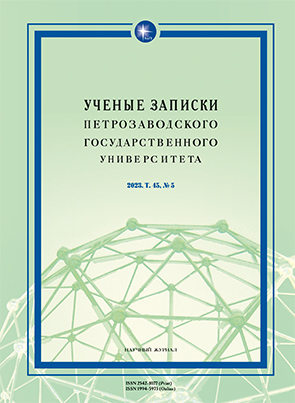ПЕТРОГРАФИЧЕСКИЕ ИССЛЕДОВАНИЯ КЕРАМИКИ СПЕРРИНГС С ПАМЯТНИКОВ ЮГО-ЗАПАДНОГО ПРИБЕЛОМОРЬЯ
PETROGRAPHIC STUDIES OF THE SPERRINGS CERAMICS FROM THE MONUMENTS OF THE SOUTHWESTERN WHITE SEA REGION
Author(s): Konstantin Enrikovich GermanSubject(s): Archaeology, Cultural history
Published by: Петрозаводский государственный университет
Keywords: petrographic analysis; greasy clay; lean clay; White Sea; early Neolithic; Sperrings ceramics;
Summary/Abstract: The aim of the study was to establish the presence or absence of differences in the compositions of the molding masses of the Sperrings ceramics, depending on the geographical area of the settlements. The task was to determine the structure and material of the ceramics fragments from the settlements of the Sperrings culture on the territory of the White Sea region. Fifteen fragments were selected for the petrographic study, including mainly parts of the vessel walls decorated with the main types of ornamentation: impressions of fish vertebrae (4), receding lines (7) and a rope stamp (4). The studies were carried out in sanded samples using MBS-1 binoculars with 16x, 24x and 140x magnification. In terms of the clay composition, most of the studied ceramics fragments (10) are made of thin clays of hydrosluidic and smectite-hydrosluidic composition, although this type of clay is of inferior quality and was used to a lesser extent for the manufacture of the Sperrings ceramics from the settlements of Lake Onega basin. In the test of all the studied fragments of the Sperrings ceramics from the monuments of the southwestern White Sea region, only the soil of crystalline rocks was recorded as a thinner, which has direct analogies with the ware of Lake Onega basin.
Journal: Ученые записки Петрозаводского государственного университета
- Issue Year: 45/2023
- Issue No: 5
- Page Range: 8-14
- Page Count: 7
- Language: Russian

